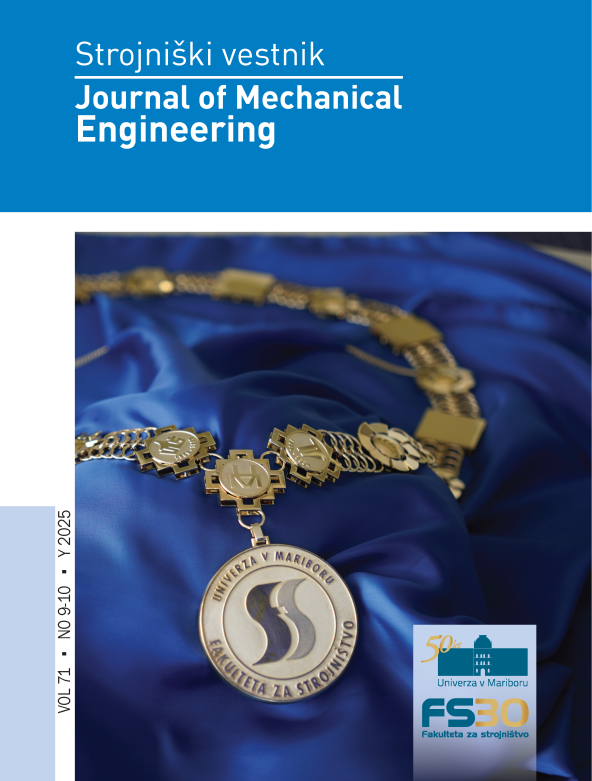Numerical Solving of Dynamic Thermography Inverse Problem for Skin Cancer Diagnosis Based on non-Fourier Bioheat Model
DOI:
https://doi.org/10.5545/sv-jme.2025.1368Keywords:
numerical modeling, dynamic thermography, inverse problem, non-Fourier bioheat transfer, dual-phase-lag model, boundary element method, Levenberg-Marquardt optimizationAbstract
This paper presents numerical solving of the inverse bioheat problem to estimate four skin cancer parameters; diameter, thickness, blood perfusion rate and thermal relaxation time, based on the thermal response on the skin surface obtained by dynamic thermography and numerical skin cancer model, which can greatly enhance dynamic thermography diagnostics. To describe the heat transfer inside biological tissue and thermal behavior during the dynamic thermography process as realistic as possible, the non-Fourier dual-phase-lag bioheat model was used, as well as skin cancer model has been composed of multilayered healthy skin, embedded skin tumor and subcutaneous fat and muscle. Boundary element method has been used to solve a complex non-Fourier bioheat model to simulate dynamic thermography based on the skin cancer model and guessed searched parameters to obtain the thermal response on the skin surface during the cooling and rewarming phase using a cold air jet provocation, which is needed for the solution of the inverse bioheat problem. The inverse problem has been solved by optimization approach using the hybrid Levenberg-Marquardt optimization method, while the measurement data has been generated numerically with known exact tumor parameters and added noise, to evaluate the accuracy and sensitivity of the solution. Inverse problem solution has been tested for two different thermal responses; absolute temperature and temperature difference response, as well as for two different tumor stages; early stage or Clark II and later stage or Clark IV tumor. All important tumor parameters were successfully retrieved, especially the diameter and relaxation time, even for the high level of noise, while the accuracy of obtained parameters is slightly better using absolute temperature response. The results demonstrate the robustness of the method and a promising way for early diagnosis. The findings contribute to improving bioheat modeling in biological tissues, solving inverse bioheat problems and advancing dynamic thermography as a non-invasive tool for early skin cancer diagnosis.
Downloads
Published
How to Cite
Issue
Section
License
Copyright (c) 2025 The Authors

This work is licensed under a Creative Commons Attribution 4.0 International License.


